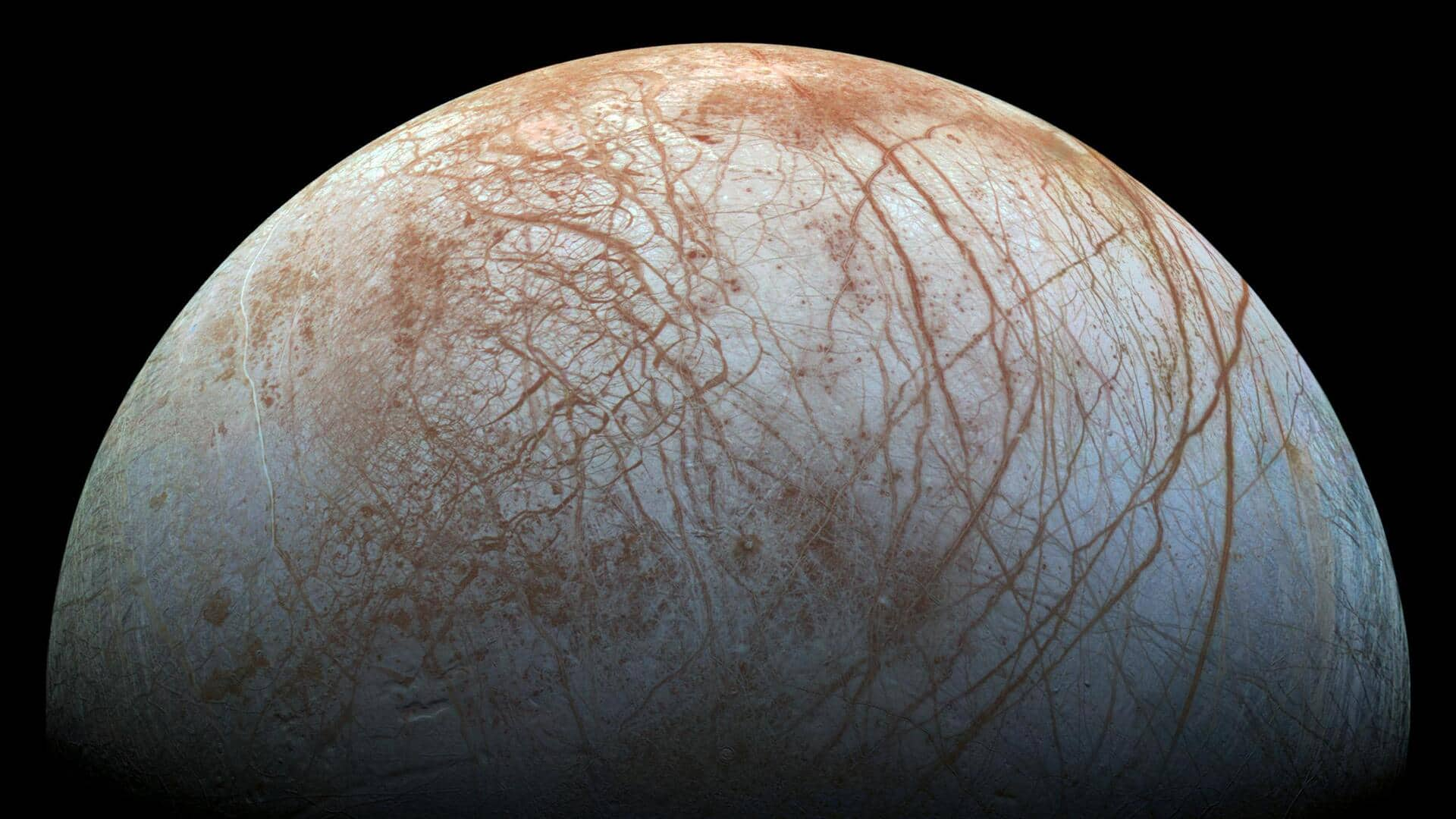
JWST finds carbon dioxide on Europa, fuels possibilities of life
What's the story
Jupiter's icy moon Europa, known to have a subsurface ocean beneath its crust, is among the most intriguing targets in the search for extraterrestrial life. Now, NASA's James Webb Space Telescope (JWST) has found evidence of carbon dioxide, one of the main building blocks of life, on Europa. For life to exist, scientists usually look for three conditions: liquid water, the right chemistry, and an energy source. Europa appears to have the potential to check all the boxes.
Details
Webb's findings suggest CO2 came from Europa's subsurface ocean
Previously, solid carbon dioxide ice had been detected on Europa, but it was unsure if it came from its subsurface ocean or meteorite impacts. Using Webb, scientists found that carbon dioxide was most abundant in a region called Tara Regio, a geologically young area on Europa, characterized by a disrupted terrain. Per NASA, the surface ice in this region has been disrupted, suggesting there has been a recent exchange of material between the ocean and the moon's surface.
Insights
CO2 likely accumulated on Europa in a 'geologically recent timeline'
"Previous observations from the Hubble Space Telescope show evidence for ocean-derived salt in Tara Regio," said Samantha Trumbo of Cornell University. "Now we're seeing that carbon dioxide is heavily concentrated there as well. We think this implies that the carbon probably has its ultimate origin in the internal ocean." Per NASA, carbon dioxide was likely accumulated on Europa's surface in a geologically recent timescale, building on the fact that Tara Regio is a relatively young terrain on the moon.
What Next?
The upcoming Europa Clipper mission could unlock the moon's secrets
The recent Webb findings could be useful for NASA's upcoming Europa Clipper mission, which will launch in October 2024. The spacecraft will perform multiple close flybys of Europa to further investigate its potential habitability. It could determine whether Europa's ocean is hostile to life or if it might be a good place for life to thrive. Clipper mission will also investigate the potential habitability of Jupiter's other icy moons, Ganymede and Callisto, where carbon has previously been detected.